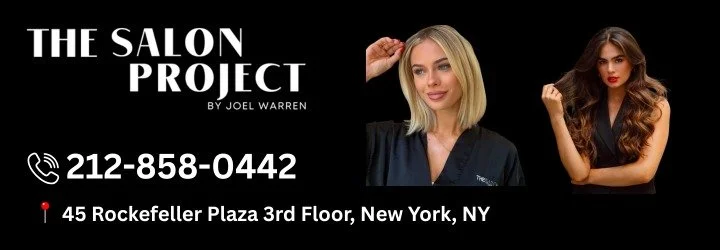Bond-Building Treatments vs. Deep Conditioners: Which Do You Need
Bond-Building Treatments vs. Deep Conditioners are two popular hair care solutions designed to repair and nourish damaged hair. Understanding the differences between these treatments can help you choose the right one for your hair type and concerns. While both aim to improve hair health, they do so in very different ways, making it important to know when to use each.
What Are Bond-Building Treatments?
Bond-building treatments, sometimes referred to as bond repair treatments, are formulated to restore the internal structure of the hair. Hair strands are made of keratin proteins linked by disulfide bonds. These bonds are crucial for hair strength, elasticity, and overall integrity. Chemical processes such as coloring, bleaching, perming, and even excessive heat styling can break these bonds, leading to weak, brittle, and damaged hair.
Bond-building treatments work at a molecular level to reconnect these broken bonds, essentially repairing hair from the inside out. Popular bond-repair systems often contain ingredients like hydrolyzed proteins, amino acids, and patented compounds specifically designed to mimic or restore natural hair bonds. These treatments are not just temporary fixes—they aim to strengthen the hair long-term and prevent further damage.
What Are Deep Conditioners?
Deep conditioners are intensive moisturizing treatments meant to nourish and hydrate hair externally. Unlike bond-building treatments, deep conditioners do not repair the internal structure of hair. Instead, they focus on replenishing moisture, improving softness, reducing frizz, and enhancing manageability.
Deep conditioners typically contain rich oils, butters, humectants, and proteins that coat the hair shaft, sealing in hydration and smoothing the cuticle. They are ideal for hair that feels dry, rough, or tangled but may not necessarily be chemically damaged. While deep conditioners can temporarily strengthen hair by providing essential nutrients, their effect is mostly cosmetic and short-term compared to bond-building treatments.
Key Differences Between Bond-Building Treatments and Deep Conditioners
Understanding the core differences between these treatments is essential to choosing the right one:
Function: Bond-building treatments repair the hair internally, whereas deep conditioners primarily nourish and smooth the hair externally.
Targeted Damage: Bond-building treatments are ideal for chemically or structurally damaged hair. Deep conditioners are better for dry or dehydrated hair that needs moisture.
Longevity of Results: Bond-building treatments offer long-term strengthening benefits, while deep conditioners provide temporary softness and shine.
Frequency of Use: Bond-building treatments are usually applied less frequently due to their potent effects, while deep conditioners can be used more regularly as part of a weekly hair care routine.
Signs You Need a Bond-Building Treatment
If you notice any of the following signs, a bond-building treatment may be necessary:
Hair breaks easily or feels weak after washing or brushing.
Split ends and frizz are prevalent, even with regular conditioning.
Your hair has been heavily chemically treated, bleached, or color-processed.
Excessive heat styling has left hair dry and brittle.
Using a bond-building treatment can help prevent further damage while gradually restoring strength and elasticity to your hair.
Signs You Need a Deep Conditioner
Deep conditioners are most beneficial for hair that shows signs of dryness or dehydration rather than structural damage. Look for these indicators:
Hair feels rough, dry, or straw-like.
Frizz is difficult to manage, especially in humid conditions.
Hair lacks shine or appears dull despite healthy ends.
Hair tangles easily, even with gentle combing.
A deep conditioner can revitalize your hair, making it softer, shinier, and easier to style.
How to Use Bond-Building Treatments
Bond-building treatments are often salon-based but some at-home options are available. The application method can vary depending on the product, but general guidelines include:
Start with clean, damp hair.
Apply the treatment evenly from roots to ends, focusing on damaged areas.
Allow the treatment to process for the recommended time—usually 5 to 30 minutes depending on the formula.
Rinse thoroughly and follow with a gentle conditioner if needed.
Professional bond-building treatments often require multiple sessions for optimal results. At-home products are best for maintenance between salon visits.
How to Use Deep Conditioners
Deep conditioning can be incorporated into your regular hair care routine once or twice a week. Here’s a simple method:
Wash hair with a mild shampoo and remove excess water.
Apply the deep conditioner generously, concentrating on mid-lengths to ends.
Leave the conditioner on for 10 to 30 minutes, using heat if recommended to enhance absorption.
Rinse thoroughly and style as usual.
Deep conditioning is flexible and can be adapted for different hair textures and needs.
Combining Both Treatments
In many cases, hair benefits from both bond-building treatments and deep conditioning. A recommended approach is:
Use a bond-building treatment once every few weeks to repair and strengthen the hair structure.
Incorporate deep conditioning weekly to maintain moisture, softness, and manageability.
Avoid overloading hair with too many treatments at once, as this can weigh it down or cause buildup.
By combining these treatments strategically, you can achieve both long-term repair and everyday softness.
Choosing the Right Treatment for Your Hair Type
Your hair type, lifestyle, and level of damage will dictate which treatment is most suitable:
Chemically treated hair: Bond-building treatments are crucial for repair.
Naturally dry or curly hair: Deep conditioners can restore moisture and reduce frizz.
Fine or thin hair: Use lightweight deep conditioners and avoid heavy bond-repair products that can weigh hair down.
Thick or coarse hair: Both treatments may be needed to maintain structure and softness.
Consulting a stylist can help determine the ideal regimen based on your specific hair concerns.
Conclusion
Bond-Building Treatments vs. Deep Conditioners serve distinct but complementary purposes. Bond-building treatments repair hair from within, restoring strength and resilience, while deep conditioners provide moisture, softness, and manageability. Understanding the differences ensures that you choose the right product for your hair’s needs. For optimal hair health, a combination of both treatments—applied strategically—can transform damaged, dry, or chemically treated hair into strong, hydrated, and shiny locks.
By recognizing your hair’s unique needs and following a consistent care routine, you can maintain beautiful, healthy hair regardless of exposure to chemicals, heat, or environmental stressors.




